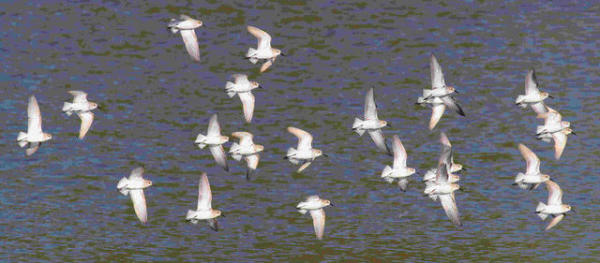
|
Mystery of Declining Sandpipers is Studied Using Remarkable Geolocators
Ornithologists from 19 organizations are collaborating on a large-scale study to analyze the migratory connections for Semipalmated Sandpipers across their nesting, migration stopover, and wintering sites. Considered one of the most widespread and most abundant shorebirds in the Western Hemisphere, recent surveys have revealed major population declines in the core of their wintering range in South America and elsewhere.
How do biologists help unravel this mystery so conservation action can be initiated? A total of 250 of the sandpipers, which are just slightly larger than sparrows and only weigh about an ounce, were equipped with tiny geolocators. These devices only weigh a minute 0.3 grams, but contain a light sensor, a clock, a battery and, yes, a computer. Ornithologists used information stored in the geolocator’s computer to determine where each sandpiper traveled throughout the year by using daylength calculations.
Results suggest that Semipalmated Sandpipers that nest in the eastern Arctic and migrate down the Atlantic Coast winter in the areas in South America where the population declines were recorded. With this knowledge in hand, the researchers may soon be able to better understand and address causes for the sandpiper’s decline.
For more information, refer to https://www.manomet.org/publication/manomet-and-partners-collaborate-to-pinpoint-reasons-behind-mysterious-semipalmated-sandpiper-decline/